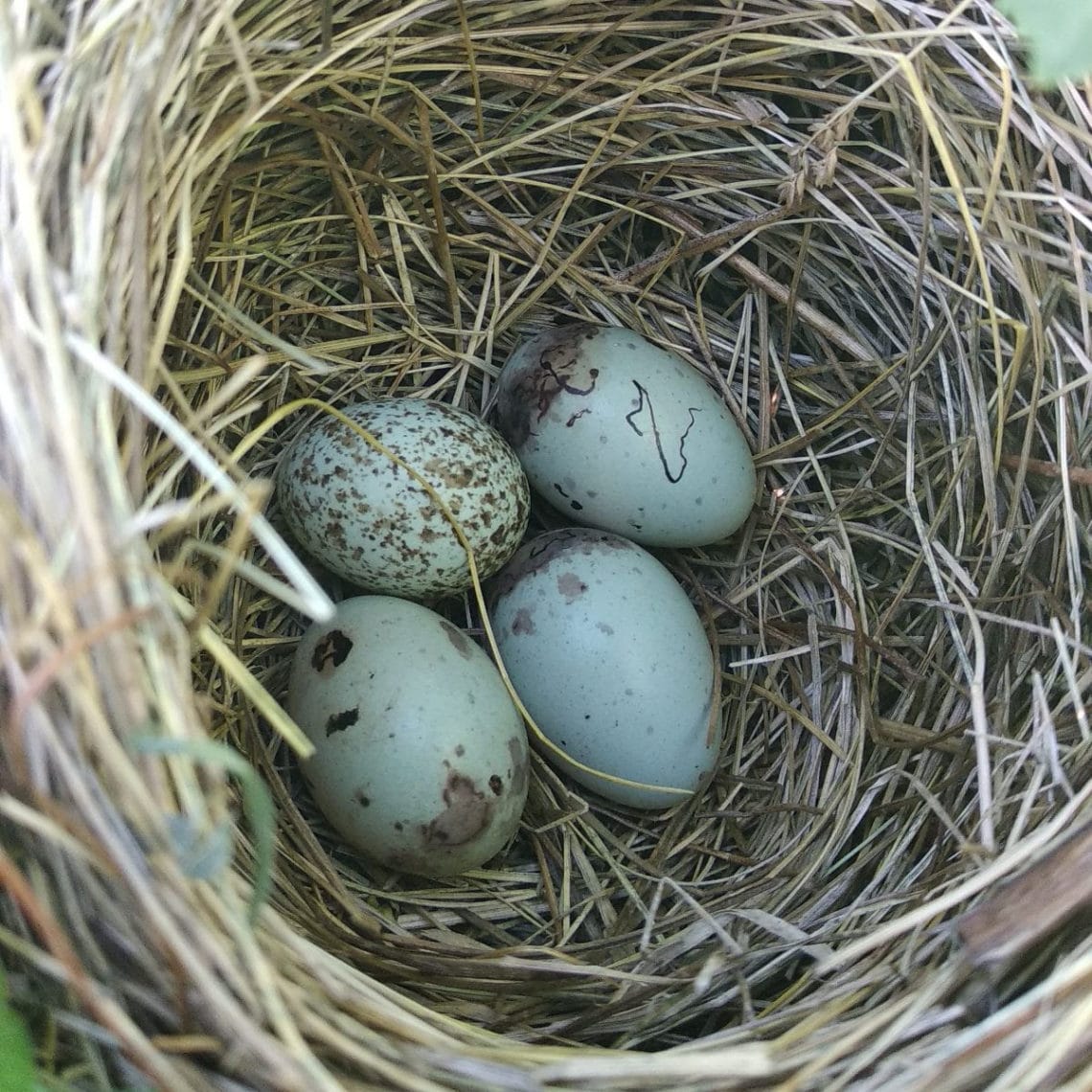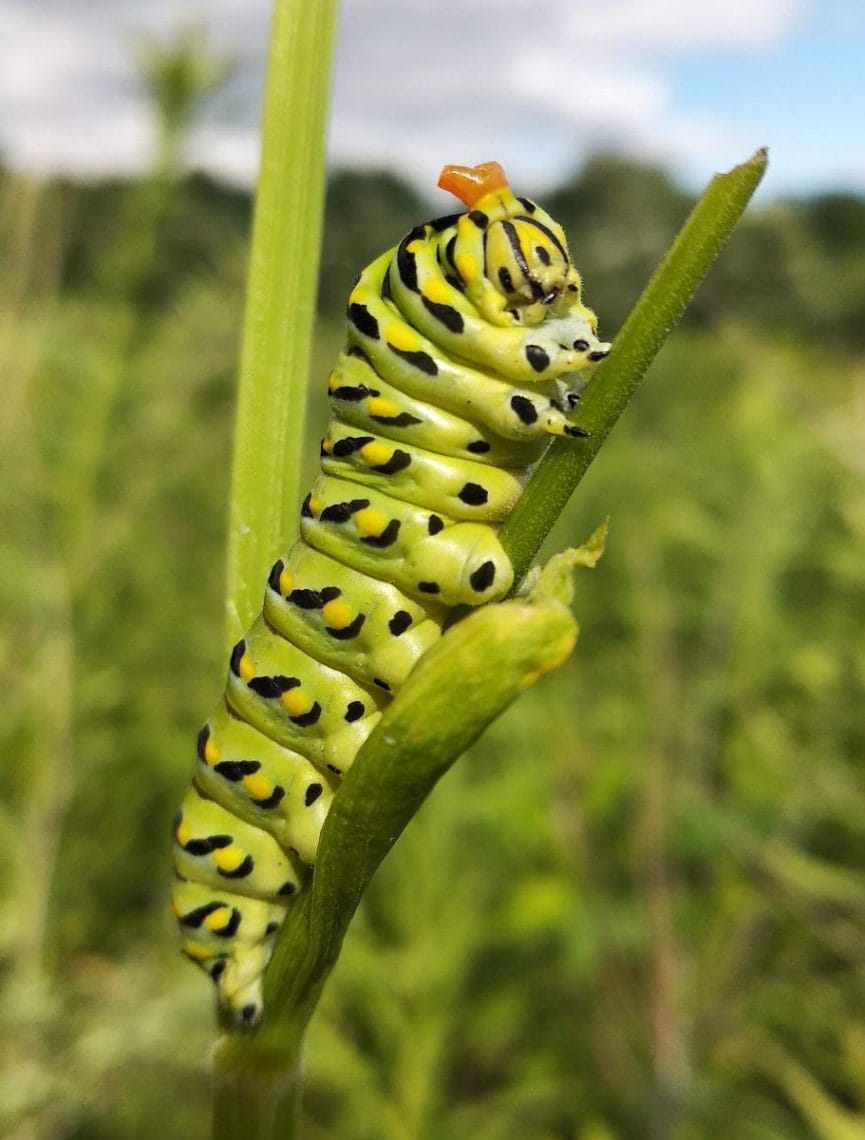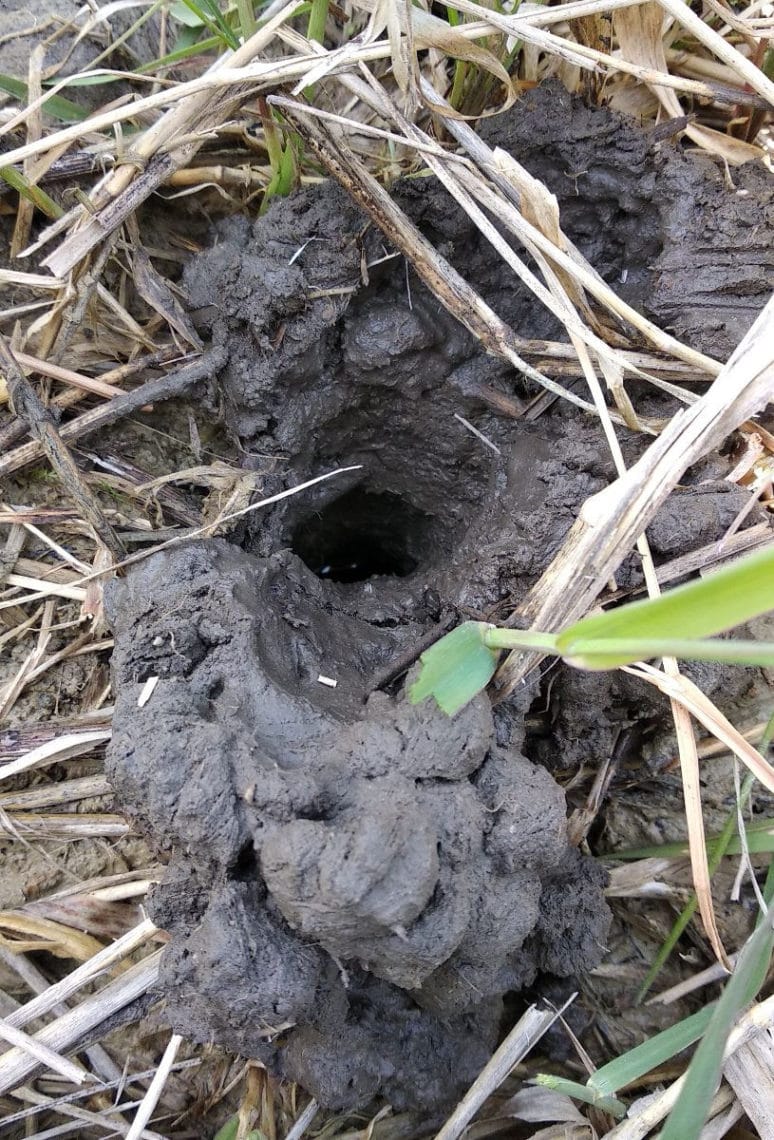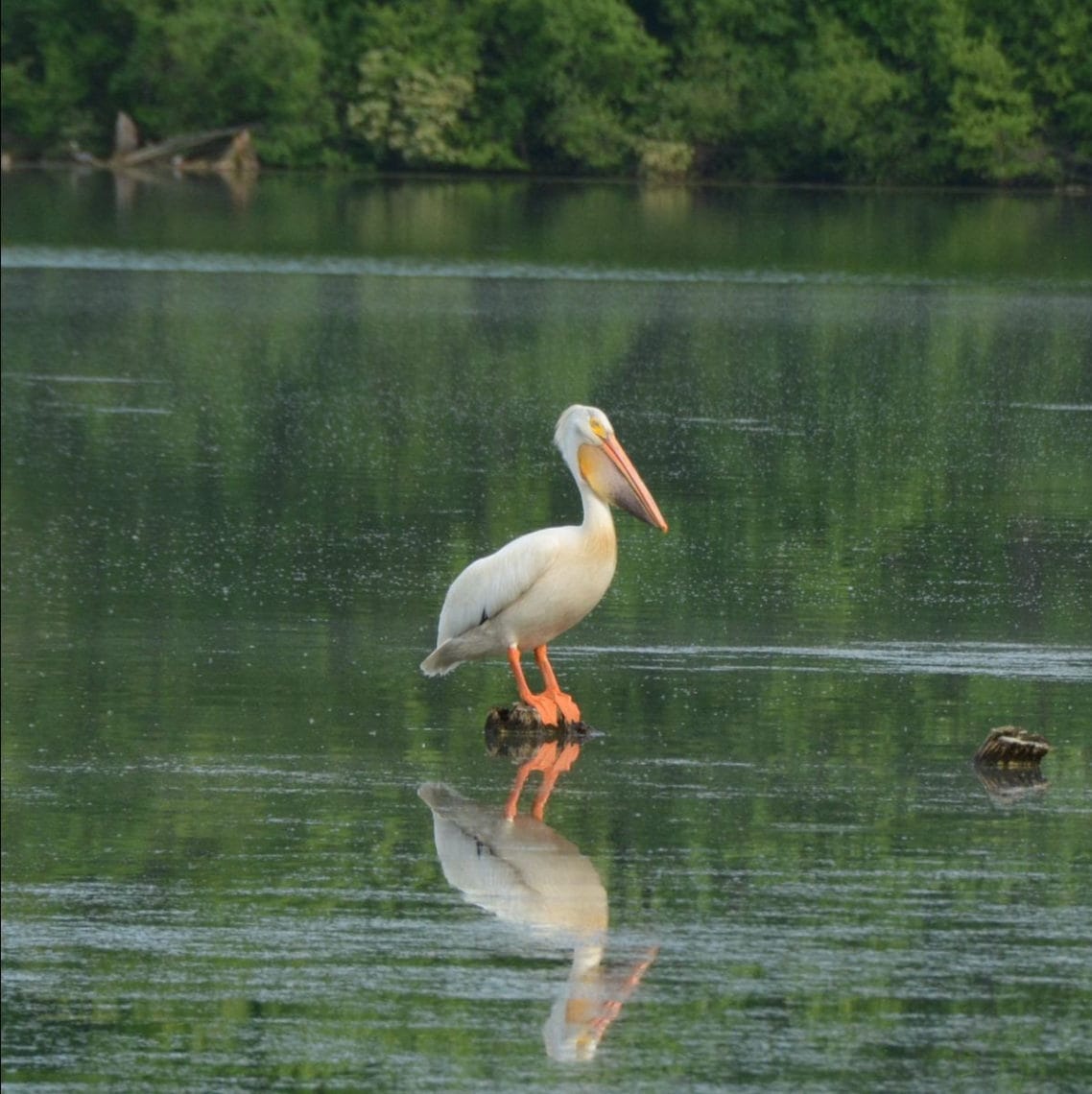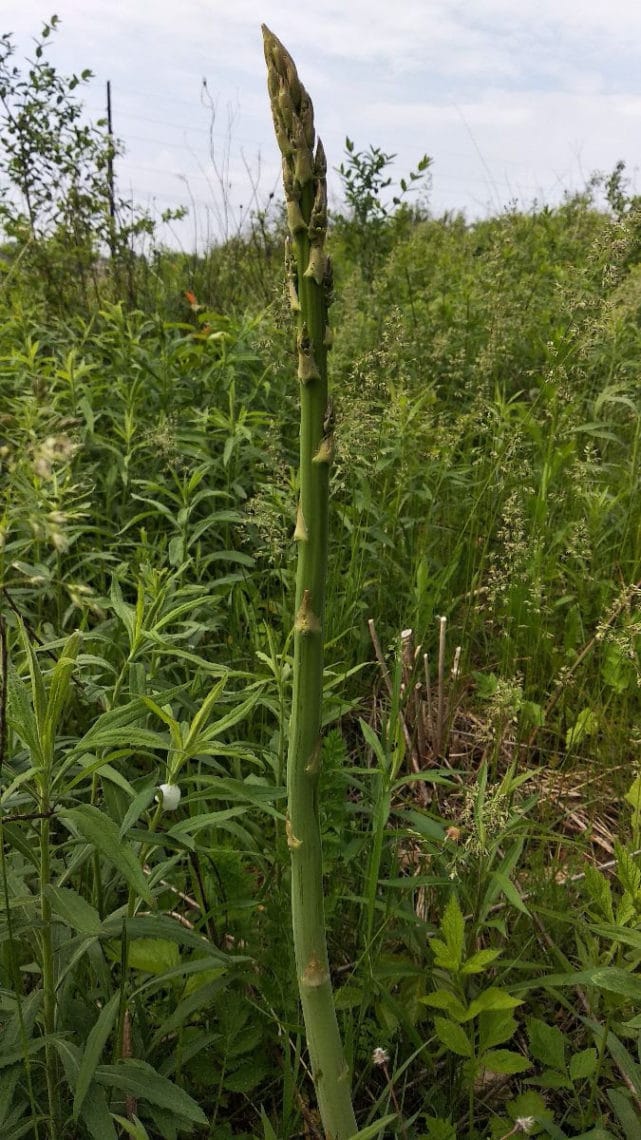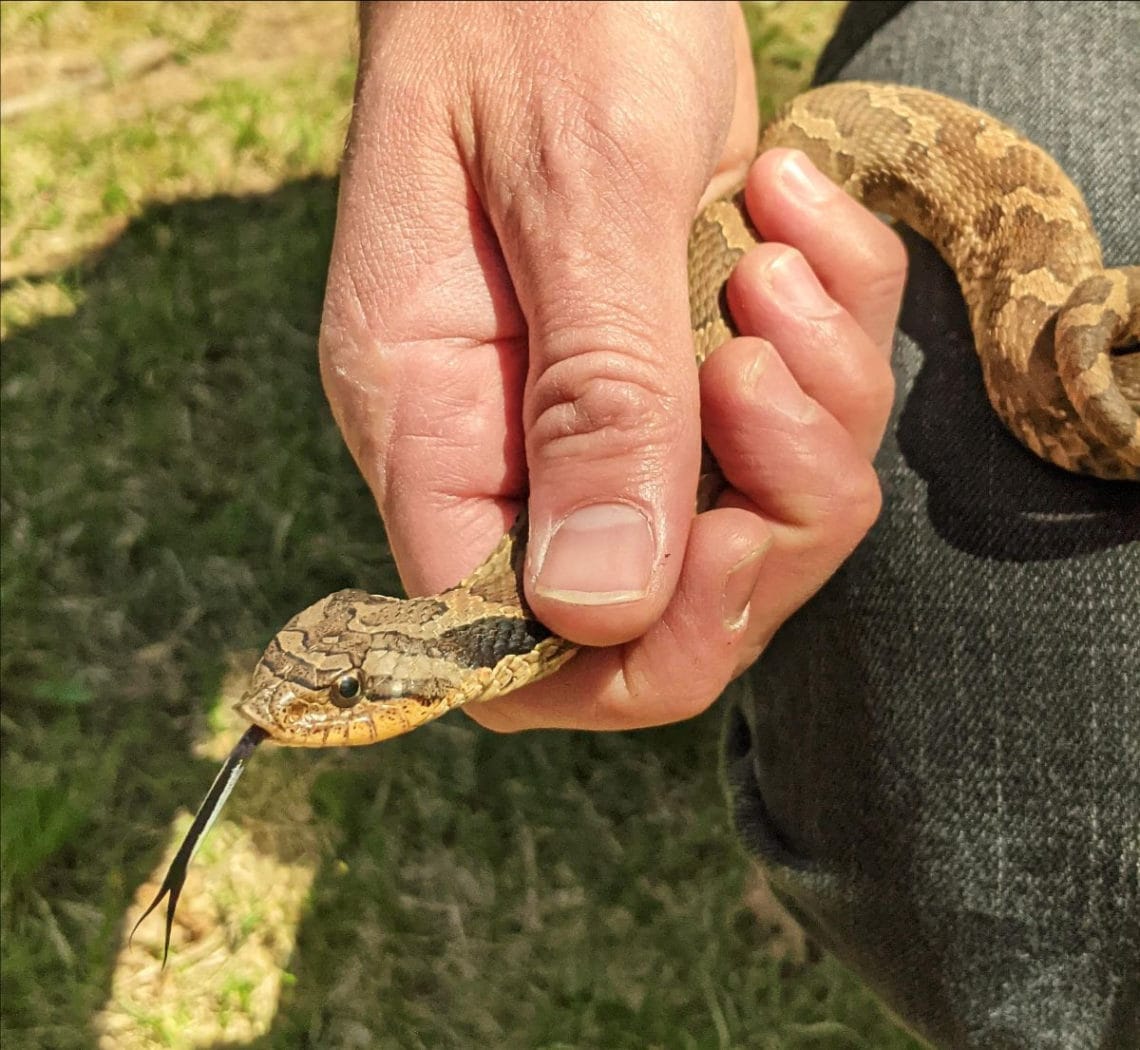I’m hesitant to say it, but it looks like we might finally be on the other side of the intense dry spell that we’ve been having! Every evening I take a stroll through my neighborhood with my black lab named Tucker, and seeing all of the brown lawns is yet another reminder of how hot it’s been. Even those who regularly get the sprinkler going in their yard are still having trouble maintaining green grass.
However, if you were to head out to a natural space you would probably notice that nature continues to thrive despite these conditions. I know that I wouldn’t last a day in that heat without water, but somehow nature makes it looks easy. Let’s take a quick virtual tour of the outdoors and see what else nature has been up to, while we’ve been hiding from the heat.
The plant shown in the photo above is called cup plant, and it’s easy to see why. Where the leaves meet the central stem, a water-holding cup is formed. Each cup plant has several cups along the length of the stem, and these cups can serve as a nice place for critters to take a much needed drink. It’s not uncommon to see birds like the American goldfinch stopping by to take a sip.
If you take a good look at the nest photo above, you might notice that one of the eggs is a little smaller than the other three. It also has more brown speckles. The reason it’s different is because it belongs to different bird species.
While out with the Prairie Partners intern crew at Patrick Marsh this week, we found this red-winged blackbird nest constructed within a cluster of wild parsnip (which was the plant species we were removing at the time). We noticed that one of the eggs was different, which usually means that a brown-headed cowbird was involved. Brown-headed cowbirds are known for not building their own nests. In fact, they can’t build nests at all. Instead, they put a lot more energy into laying their eggs in other birds’ nests. According to the Cornell Lab of Ornithology, they can sometimes lay more than three dozen eggs in a summer!
Brown-headed cowbird chicks are then raised by a foster parent (unless the parent identifies the egg as not their own and removes it from the nest). I encourage you to watch this video on ‘brood parasitism‘ to learn more. *Warning* nature can be… well… nature! As a reminder, cowbirds are protected in the United States and it’s illegal to remove their eggs from other birds nests (as tempting as it may be for some).
|
|
Early each year during spring I am constantly on the lookout for beautiful flowers popping up here and there across the landscape. The flush of color in a woodland or prairie is a great break from the gray skies and white snow of winter. While that’s still true for me this time of year, I can’t help but notice everything else that’s happening around me. Frogs are singing, nighhawks are buzzing, pelicans are basking, and snakes are slithering! So without further ado, let’s explore!
The other day I was out on a hike through a marshy area with my family. We were mostly searching for pelicans, all sorts of waterfowl, and even the elusive yellow-headed blackbird. We struck out on the blackbirds (plenty of red-winged blackbirds) but saw everything else.
We walked through an area that would regularly be inundated with water, but since this year has been pretty dry so far, it wasn’t too wet. We noticed some odd holes that had quite a bit of mud stacked up around them. The actual hole was about an inch in diameter. While I was scratching my head and getting ready to pull out our track and sign field guide, my wife Carolyn looks over and said “Oh nice! Check out that crawfish chimney.”
Apparently, this was the entrance to a crustacean home. Depending on the species, many crawfish will burrow down into the mud up to 3 feet deep or more! They do this by forming little balls of mud with their legs which they then drag to the surface and deposit just outside of the burrow. After doing more research than I’d like to admit, I figured out that crawfish species cannot be identified by their chimney. Looks like I’ll need to wait outside of the entrance with my headlamp…
Speaking of pelicans, have you noticed that they have finally returned? Normally, I have a few places that I go to for viewing pelicans and I tend to not see them often outside of those places. This year has been a little different for some reason and they’re popping up everywhere! We were hanging out in a friend’s backyard in Madison this past weekend and happened to see a handful of them circling above a dozen common nighthawks that flew past just minutes before. It was a fantastically unexpected evening of birding.
I’ve been getting quite a few emails about pelicans lately and one of the main questions has to do with the lack of baby pelicans around. One of the main reasons you tend to only see adults is because American white pelicans need much larger expanses of water for breeding grounds than can be found in and around south-central Wisconsin. They do tend to breed at locations like Horicon Marsh or Cat Island near Green Bay, but any pelicans you see around these parts are likely loafing around and enjoying the scenery until they move on.
I also just learned from the Cornell Lab of Ornithology that pelicans must provide at least 150lbs of food to nourish one single chick from the time it’s born until it can forage on its own… That puts my ability to catch fish to shame.
I mostly wanted to include this photo because I was extremely proud of myself for accidentally finding a few small patches of wild growing asparagus. I’ve stumbled upon quite a few of these over the years actually and it’s hard to go back to store bought asparagus after trying the fresh picked stuff. They’re so good and they pair really well with morels which are out right now as well (but I’m terrible at finding those).
|
|


